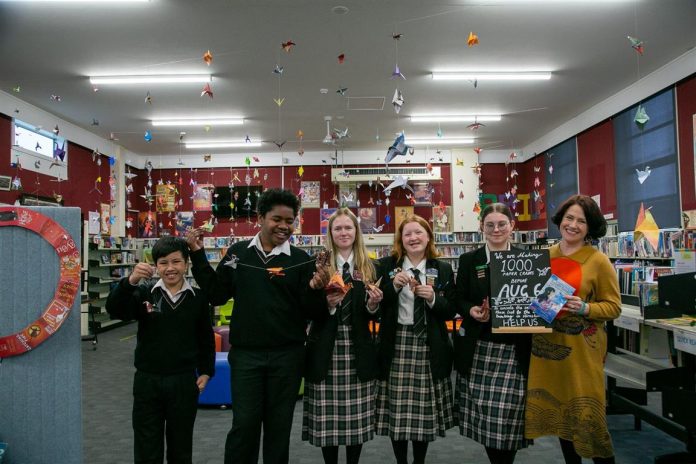
Students at Mount Hutt College, alongside members of the community, have been busy making 1000 origami paper cranes to mark Hiroshima Day.
In August 79 years ago during World War 2, America detonated two atomic bombs over the Japanese cities of Hiroshima and Nagasaki. It was the first use of atomic weapons in war.
The bombings killed between 150,000 and 246,000 people, most of whom were civilians.
Library manager Stephanie Tantau said the idea of making the paper cranes took flight at the school when she realised the Hiroshima anniversary, August 6, was approaching.
The worldwide initiative has its origins in a Japanese story told about a young girl, Sadako Sasaki.
Sadako developed leukaemia following the atomic bomb devastating her home city of Hiroshima.
While in hospital, she began folding cranes with the hope of fulfilling the legend that if she made 1000, she would be granted a wish.
She kept folding them to the end, but on October 25, 1955, after an eight-month struggle with the disease, she died.
Her story has become a poignant symbol of peace and a reminder of the devastating impact of war.
Now every year in Hiroshima students send in cranes to be displayed at the base of the peace memorial and the statue of Sadako.
‘‘The Mount Hutt College project started with just my amazing student librarians, we started learning how to fold cranes in early May,’’ Tantau said.
‘‘We used pieces of recycled paper and old magazines and books.
‘‘It wasn’t long before we became skilled at it, and some of the librarians even hosted mini-workshops during lunchtime to teach other students how to fold. The library was often buzzing with students creating origami. It was truly inspiring,’’ she said.
‘‘Word of our project spread, and soon I was finding shopping bags full of cranes on my desk each morning, often from unknown donors.
‘‘I loved seeing the variety in techniques and the beautiful paper used in these tiny masterpieces. Some cranes were a bit rough, while others were expertly folded,’’ Tantau said.
‘‘Regardless of their quality or technique, every crane was hung from the library ceiling, each one unique and different from the next. Initially, it took us about 20 minutes to make each crane.
‘‘We quickly improved and were soon producing cranes in under a minute. This was crucial because, despite our collective efforts, we only just managed to meet our deadline of 1000 … but we did do it!’’
Year 13 student Sam Wooding said the project brought everyone together.
‘‘It helped us connect with people we might not have otherwise talked to. I also appreciated the meaningful symbolism of peace behind it.’’



